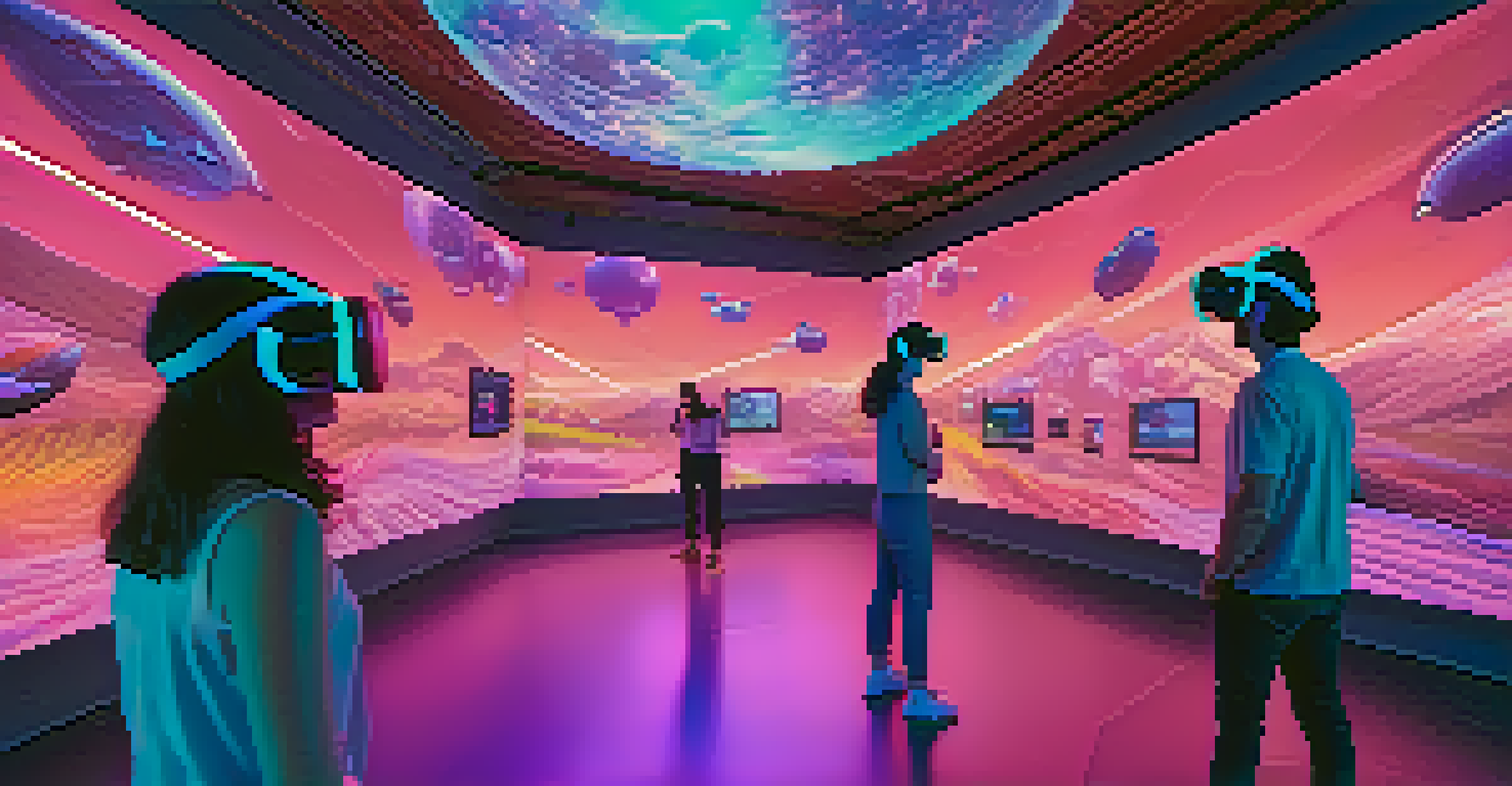Ethereum's Impact on Digital Art Ownership and Rights

Understanding Ethereum and Its Role in Digital Art
Ethereum is a decentralized blockchain platform that enables smart contracts and decentralized applications. This technology allows artists to create and sell digital art in a new way, ensuring that ownership can be verified without a central authority. Imagine a world where you can prove you own a digital painting just like you would a physical one, thanks to blockchain technology.
The future is already here – it's just not very evenly distributed.
The platform supports non-fungible tokens (NFTs), unique digital assets that represent ownership of a specific item, such as a piece of art. By using Ethereum, artists can mint their work as NFTs, making it easier to buy, sell, and trade digital art. This innovation is akin to having a digital certificate of authenticity for your artwork.
With Ethereum, artists gain more control over their creations, allowing them to set royalties and ensure they benefit from future sales. This shift is particularly significant in an industry where artists often struggle to maintain rights to their work, and it opens up new avenues for earning revenue.
NFTs: Redefining Ownership in the Digital Space
Non-fungible tokens, or NFTs, have become synonymous with digital art ownership. Each NFT acts as a digital fingerprint, making it impossible to duplicate or forge, which is crucial in establishing authenticity. Think of an NFT as a one-of-a-kind trading card; while others may have similar cards, yours is unique and holds its value.

This unique aspect of NFTs allows artists to sell their work directly to collectors without intermediaries, eliminating traditional gatekeepers like galleries or auction houses. This direct-to-collector approach empowers artists, enabling them to reach a global audience and maximize their profits. It’s like turning the art world into an open marketplace.
Ethereum Empowers Digital Artists
Ethereum enables artists to mint NFTs, granting them control over their work and the ability to earn royalties from future sales.
Moreover, the use of smart contracts on Ethereum ensures that artists receive royalties every time their art is resold. This ongoing revenue stream is a game-changer, allowing creators to benefit from the appreciation of their work over time, much like how an author earns royalties from book sales.
Benefits for Artists: Empowerment and Revenue Streams
The traditional art market often places artists at the mercy of galleries and dealers, limiting their power over their own work. Ethereum and NFTs shift this dynamic by giving creators the tools to manage and sell their art independently. By utilizing these technologies, artists can take charge of their careers, much like musicians using streaming platforms to distribute their music.
Art is not freedom from discipline, but disciplined freedom.
With the ability to upload their work to platforms that support NFTs, artists can showcase their creations to a wider audience without incurring high costs associated with physical exhibitions. This increased visibility can lead to more sales and opportunities, making art more accessible to both creators and collectors.
Additionally, the potential for earning royalties from secondary sales not only benefits artists but also encourages them to create more. Knowing they will continue to earn from their work fosters a healthier creative environment, where artists can thrive and innovate without the fear of being undercompensated.
Challenges and Concerns in the NFT Market
While Ethereum has transformed the digital art landscape, it is not without challenges. The environmental impact of blockchain technology, particularly energy consumption, raises concerns for many artists and collectors. This is akin to the debate surrounding the carbon footprint of traditional art practices, prompting a call for more sustainable solutions.
Moreover, the NFT market can be volatile, with prices fluctuating dramatically. This unpredictability can be daunting for new artists entering the space, who may find it difficult to establish their value. It’s similar to the rollercoaster of the stock market, where understanding when to buy or sell is crucial.
NFTs Redefine Art Ownership
Non-fungible tokens provide a unique digital ownership model that allows artists to sell directly to collectors, bypassing traditional gatekeepers.
Lastly, the digital realm is rife with issues like copyright infringement and plagiarism. Artists must navigate these waters carefully to protect their work, often relying on legal frameworks that are still catching up with technology. This conundrum highlights the need for clear guidelines and education in the NFT space.
The Role of Community in Ethereum Art Marketplaces
Community plays a vital role in the success of artists on Ethereum. Platforms like OpenSea and Rarible not only allow artists to sell their work but also foster communities where creators and collectors can connect. Think of it as a digital art fair, where networking and collaboration enhance visibility and sales.
These platforms often feature social features, enabling users to follow their favorite artists and share their collections. This sense of community can lead to increased support and engagement, allowing artists to build loyal followings much like social media influencers do.
Additionally, community-driven initiatives, such as virtual exhibitions and collaborative projects, enhance the overall experience of being part of the Ethereum art ecosystem. Such initiatives can spark creativity and inspire artists to push boundaries, creating a vibrant and dynamic art scene.
Legal Implications of Digital Art Ownership
As digital art ownership evolves with Ethereum, so do the legal implications surrounding it. Questions about copyright, intellectual property, and the rights of creators become increasingly complex. For artists, understanding these legal frameworks is crucial, much like navigating the rules of the traditional art world.
The ownership of an NFT does not necessarily equate to ownership of the underlying artwork. Many artists stipulate the rights associated with their NFTs, leading to varying degrees of ownership and usage rights. This nuance is akin to owning a physical print of an artwork; you may have the print, but the original artist retains certain rights.
Community Enhances Art Market
Platforms like OpenSea foster communities that connect artists and collectors, enhancing visibility and collaboration in the digital art space.
As the NFT space matures, lawmakers and legal experts are beginning to address these issues, but clarity remains a work in progress. Artists must stay informed and possibly seek legal advice to protect their interests as they navigate this new landscape.
The Future of Digital Art in the Ethereum Ecosystem
Looking ahead, the future of digital art in the Ethereum ecosystem seems promising. As technology evolves and more artists embrace NFTs, we may witness a cultural shift where digital art gains the same respect as traditional forms. Imagine a world where digital artists are celebrated on par with painters and sculptors, with their work displayed in prestigious galleries.
Emerging technologies, such as augmented reality and virtual reality, could further enhance the way we experience digital art. This convergence of art and technology will likely create new opportunities for artists to innovate and engage audiences in ways we’ve never seen before.

Overall, Ethereum's impact on digital art ownership and rights is profound and multifaceted. As artists harness the power of blockchain, the landscape of creativity is bound to evolve, leading to exciting possibilities that will redefine how we think about art and ownership.